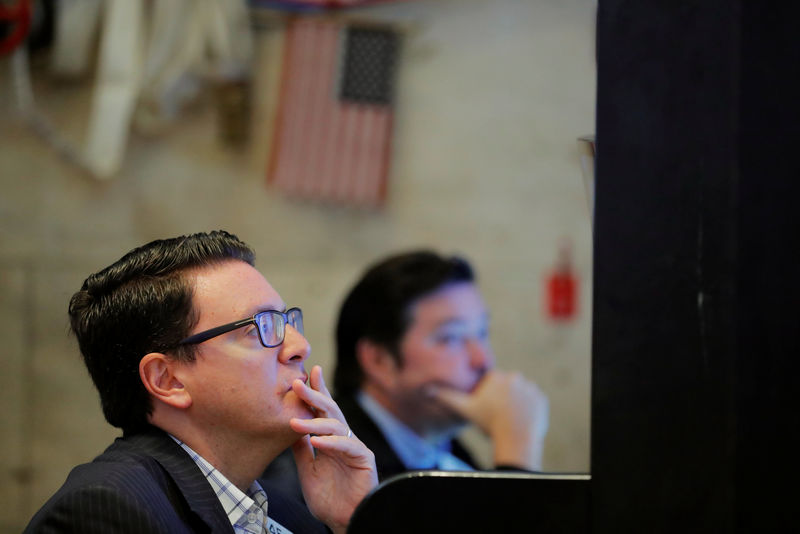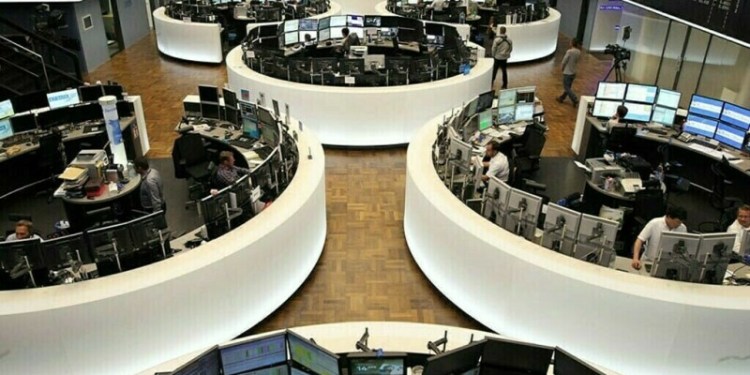 © Reuters. Traders work on the floor of the New York Stock Exchange shortly after the opening bell in New York
© Reuters. Traders work on the floor of the New York Stock Exchange shortly after the opening bell in New YorkBy Jamie McGeever
LONDON (Reuters) – As financial market participants reflect on the 10th anniversary of Lehman Brothers’ collapse, the consensus is there will be no repeat of the near-death experience, largely because authorities simply will not allow it.
The once-in-a-generation financial meltdown and economic catastrophe was so grave that, to borrow from ECB chief Mario Draghi, they will do whatever it takes to make sure it does not happen again. Painful lessons have been learned.
But the idea that a financial crisis on the scale of a decade ago could not happen again is far fetched, and not a little naive. In fact, many of the roots of the blow-up 10 years ago are still alive and well today.
All we can say with some degree of certainty is that the next crash will probably germinate in a different corner of the financial ecosystem before spreading. Familiar warning signs may flash, but what triggers one crisis may not trigger another.
Financial crashes usually result from one or more of the following: high debt and leverage, across household or corporate sectors; increased risk taking; excessive investor complacency, greed and exuberance fuelled by low volatility; rising interest rates; lower corporate profits.
There are signs that, to varying degrees, these conditions are in place today. Debt levels are higher now than before the Great Financial Crisis. According to McKinsey, total global debt rose to $169 trillion last year from $97 trillion in 2007.
Leverage in the banking system is lower now, but a decade of near zero interest rates and ultra-low volatility has fuelled speculation and risk-taking across the financial ecosystem. Remember, it was barely a year ago that Argentina launched a 100-year bond to much fanfare.
The world economy, markets, and policymaking – both fiscal and, especially, monetary – have changed radically since the financial crisis, symbolized by the U.S. investment banking giant Lehman’s implosion on Sept. 15, 2008.
With interest rates so low, central bank balance sheets so big and national debt levels so high, relatively speaking, policymakers may be running low on crisis-fighting ammunition.
Central banks now have a permanent presence in financial markets, and it is highly unlikely they will return interest rates or their balance sheets to pre-crisis “normal” levels.
Japan’s experience of extraordinary measures including QE and zero interest rates, and subdued growth rates over the last 20 years is a useful guide to what we can expect across the developed world.
“KNOWN UNKNOWNS”
There are also fresh market risks, such as the rapid advance of algorithmic trading, a passive and ETF-driven investment universe that is now worth trillions, the crypto world, and the proliferation of artificial intelligence and big data.
All that is set against an increasingly fragile political and structural backdrop. Populism, the far right, and strong-arm leaders are on the rise, globalization is fading, and public trust in governments and institutions is waning. That is a potentially toxic mix.
Global borrowing costs are rising, led by the Fed. The rise may be gradual but is coming from the lowest base in history, so the context is unprecedented. Higher U.S. rates are rarely good news for asset markets, no matter how slow the rise may be.
The corporate bond universe, particularly China, is vulnerable to higher borrowing costs and stronger dollar. Emerging markets too, especially those reliant on deficit-plugging capital from overseas – look at Turkey and Argentina.
Other emerging markets, such as Brazil, Indonesia and South Africa, have come under increasing pressure but contagion has been pretty limited. Developed markets, puzzlingly, remain largely unscathed.
That may be because economic growth, corporate profitability and asset prices have been inflated by the trillions upon trillions of dollars of liquidity pumped into the system by central banks since 2008. But that is now slowly reversing.
There is a degree of complacency across financial markets – volatility has rarely been lower, ever – and many of the risks and potential flashpoints have been well flagged. In Rumsfeldian terms, they are all “known unknowns”.
They include a corporate bond blow up in China; an emerging market crash sparked by rising U.S. rates and dollar; U.S. corporate profits diving; euro zone break-up; a global trade war; a plunge in oil prices; a sharp rise in inflation.
Of course, anticipating what may trigger a downturn and making contingency plans for it are two different things. How are you supposed to adequately prepare for the possibility that Italy might, at some unknown point in the future, leave the euro zone?
Rightly or wrongly, investors are simply hoping for the best. If the euro zone avoided Grexit and impending collapse in 2012, it will surely do so again, right? And no one in the White House really wants a full-blown global trade war, do they?
Maybe. But maybe not.
(The opinions expressed here are those of the author, a columnist for Reuters)
Source: Investing.com



























